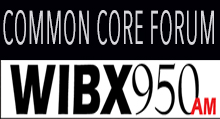by Dr. Rick Timbs
The school year has started, and we are off and running. The beginning of the academic year signals added expense pressure on each district’s cashflow. Districts have begun the tax collection process to support these expenditures and state aid will follow the usual schedule. Hopefully, the district’s finances will be fine for 2022-23!
Within the next two months the business office will begin the implementation of their budget development calendar. The process to review the current financial status of the district
and make assumptions about expenditures for the rest of the year and fund balances will begin.
All eyes will soon be on district finances for 2023-24. For most districts, the prospects for increased state Foundation Aid appear rosy. “Underfunded” districts have been promised an increase to create a “fully-funded” Foundation Aid condition. This is a long overdue and welcome sign.
“Underfunded” districts will finally be fully funded for 2023-24
As a portion of the Foundation Aid calculation contains a “CPI” factor it might appear that the increase for “Underfunded” districts might be larger than originally projected. As of this writing, with inflation at around 8% one would think the application of an inflation factor might boost a “Underfunded” district’s Foundation Aid increase for 2023-24.
But the Foundation Aid formula is complicated, and many factors influence the amount of aid calculated. Inflation is just one part of a multi-stage calculation. While the “CPI” factor in the formula is up considerably compared to previous years, many “Underfunded” districts have other factors that have moved too. This includes general enrollment and the overall demographics of the student population.
The Big Question about “Underfunded” districts
Will “Underfunded” districts get the same increase in Foundation Aid in 2023-24 as they did in 2022-23? Well, perhaps no. I believe there will be “Underfunded” districts that get more of a Foundation Aid increase in 2023-24 than in 2022-23. Especially if they have increased overall enrollment, and/or increased numbers of students with special needs. Other demographic factors such as increased Free and Reduced-Price lunch percentages (FRPL 3-year average: K-6 only) or even community wealth factors related to depressed income and property values as the corresponding state averages change will also support more aid.
However. let’s just stick with enrollment for this issue as a simple identifiable metric. Predominately, since 2010-11 about 90% of all districts have experienced an overall enrollment decline, albeit some have experienced a very recent slight increase.
Statistically, however, general enrollment and its related counterpart the Total Weighted Foundation Pupil Units (TWFPU) which includes student demographic characteristics and weighting is a large part of the formula. If a district has experienced a decline in that metric, the increase in Foundation Aid over 2022-23 will not be as robust as previously assumed. That is, the amount of increase will be to some degree lessened to get to full funding.
Not to get too technical, but generally if district enrollment continues to decline for “Underfunded” districts, the amount of Foundation Aid increase for 2023-24 will not be the same as the increase for 2022-23. It may be lower. But this diminishment will not stop “Underfunded “ districts from being “fully-funded”. Even with high inflation influencing the formula up, that factor alone will not overcome some amount of loss of general enrollment. As inflation increases the “formula value per student” up by a few hundred dollars, the loss of enrollment could decrease the “formula value per student” easily from a couple of thousand dollars to over $15,000 for example.
In summary, for “Underfunded” districts
While inflation appears to bolster aid to some degree for “Underfunded” districts, it will be neutralized or even diminished, all other things being equal, for districts where enrollment continues to decline into the 2023-24 Foundation Aid calculation. These “Underfunded” districts will be made whole but perhaps not by the amounts generally calculated based on purely 2022-23 Foundation Aid increases. We will have to see as the state aid master files are updated and used in the computation of 2023-24 Foundation Aid. We will get our first look at this potential trend when the Executive Budget is revealed in January 2023.
The Big Question about “Fully Funded/Save Harmless” districts
Will “Fully-Funded/Save Harmless” districts get the same increase in Foundation Aid in 2023-24 as they did in 2022-23? It is too soon to tell. I believe there will be some that get more of a Foundation Aid increase in 2023-24 than in 2022-23 if the same or higher ‘percent rate of increase” is applied to increase the Foundation Aid amount (“Base”) above the 2022-23 year. The 2022-23 “Fully Funded/Save Harmless” district increase was 3% compared to the previous year, although there were about forty or so districts for which only a $500 per student amount applied.
There are several considerations with the continuance of this practice. One issue is that a 3% increase in Foundation Aid for the “Fully Funded/Save Harmless” districts is hardly equivalent to approximately 8% inflation these districts face. However, based on the current Foundation Aid formula, these districts are “Fully Funded/Save Harmless” districts and not really entitled to more funds at all. That said, I doubt any state representative wants to see Foundation Aid frozen for any of the school districts in their legislative district.
In summary, for “Fully Funded/Save Harmless” districts
There is no recognized obligation or pledge for any specific increase for “Fully Funded/Save Harmless” districts. Further, if they too experience enrollment declines even as the rudimentary Foundation Aid formula per student increases due to inflationary metrics in the formula, it would not, except in a few rare cases, outstrip the loss of aid eligible once enrollment losses are considered. Generally, the “Fully Funded/Save Harmless” districts are significantly into save -harmless status on a per student basis.
There is only the smallest of chances that they would, by current formula, be eligible for any increase in Foundation Aid. Therefore, they are dependent on the state for any increase they may secure.
So, Will inflation as a part of the Foundation Aid formula send greater state aid increases to districts in 2023-24?
Not if offset by enrollment and demographic losses by the “Underfunded” districts and almost certainly no for “Fully-Funded/Save Harmless” districts. But each district is in a different place and updates to the state aid database over the next few months with help to develop a picture of what the Governor and later the legislature is willing to do to assist school districts. Our first look will be with the Executive budget in January.
I remain concerned. The caution for districts is that even if fund balances appear higher than in recent years, our costs and obligations continue to escalate. Those fund balances will not be around forever, and by all accounts the state may run into a similar issue with its own fund balance in the coming years. There is no substitute for careful analysis of future costs, revenues and fund balances as districts build the 2023-24 budget and beyond.
Dr. Rick Timbs is the Executive Director of the Statewide School Finance Consortium

![Senator Lopez [Video]](https://ssfcdata.org/wp-content/uploads/2014/09/Lopez_small.jpg)







